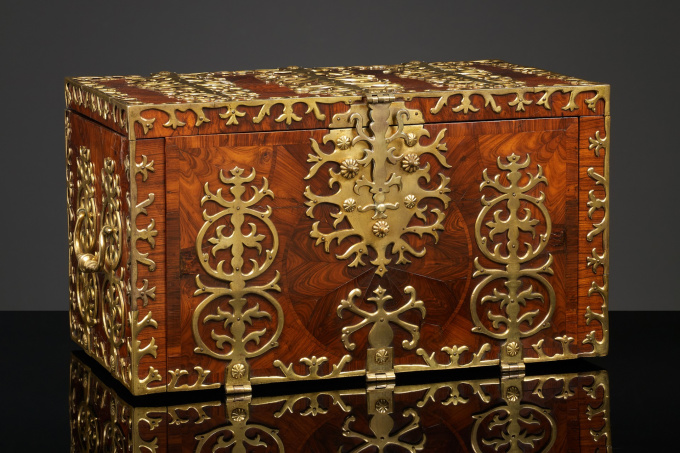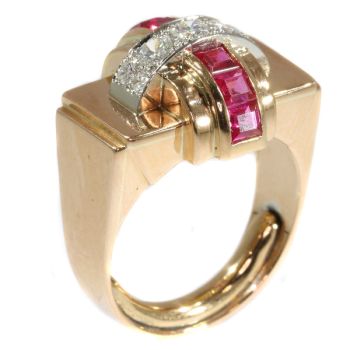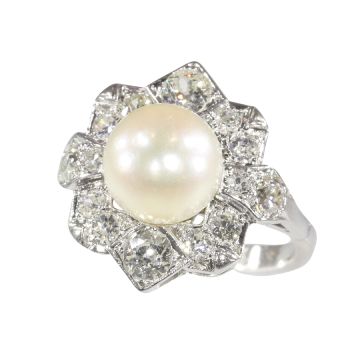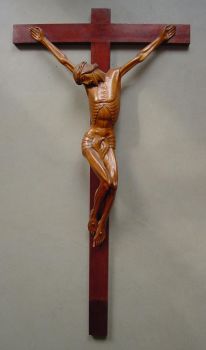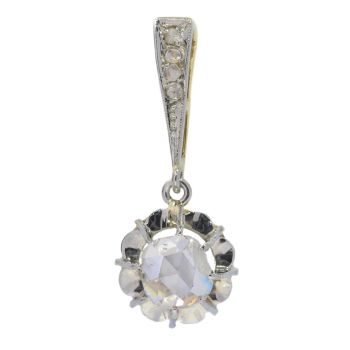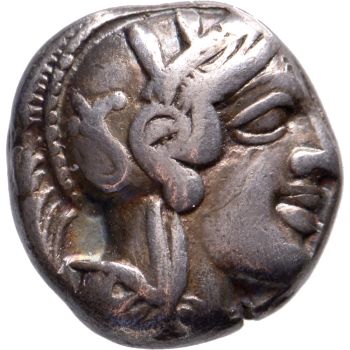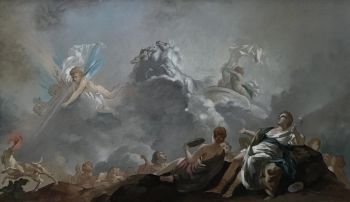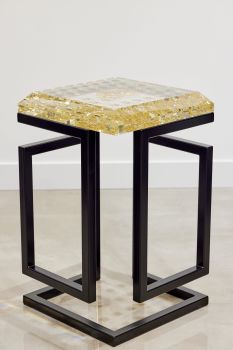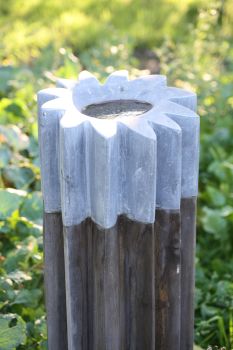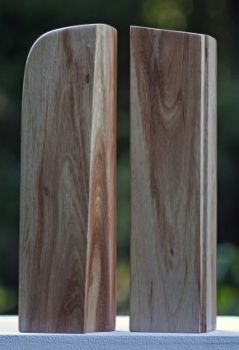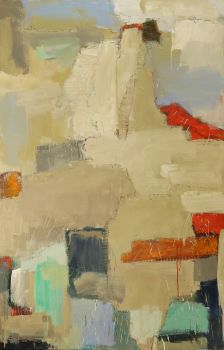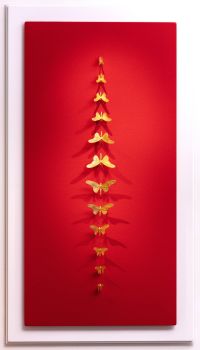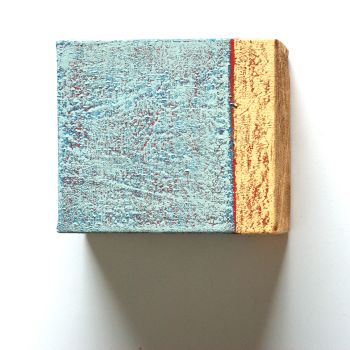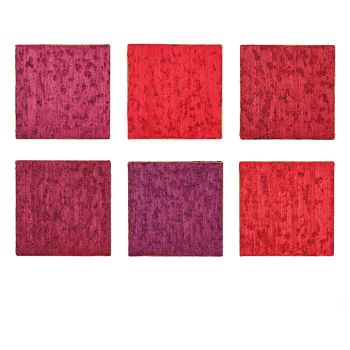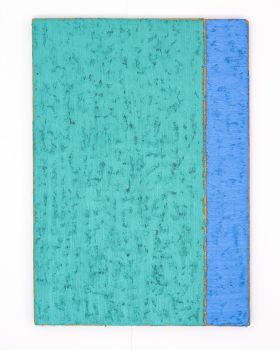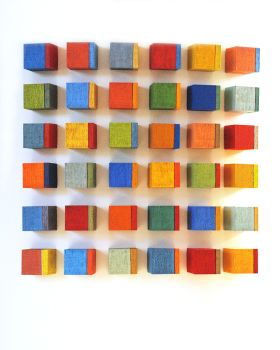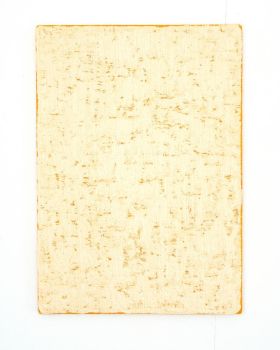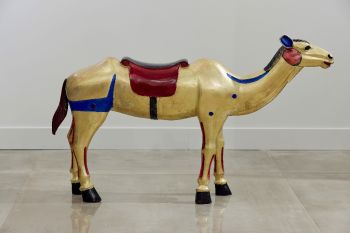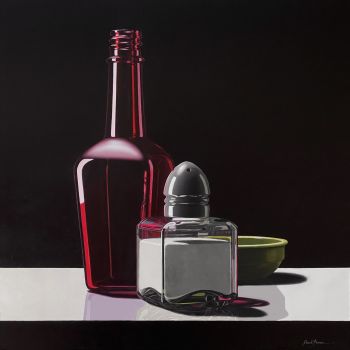Strongbox 1695 - 1710
Unbekannter Künstler
HolzOliveEiche
34 ⨯ 62 ⨯ 36 cm
ConditionExcellent
Derzeit nicht über Gallerease verfügbar
- Über KunstwerkAn oak strongbox with olive wood veneer. The box is richly ornamented with brass fittings (with traces of gilding) in the shape of leaves. The elaborate fittings should prevent the box from damage during long travels. The box can easily be moved with the help of the handles on the sides. Centrally there is a large escutcheon, that can be opened with a secret lever. When the lid is lifted, one gets access to the main storage space. In the lid there are to panels that can be opened to hold documents. There are four more secretive storage spaces in the interior. The actual keyhole, used to open the front panel, is hidden behind the lock of the lid.
With a key the front panel can be unbolted. The panel opens to the front. Once opened two small drawers are visible. Hidden to the eye are five more secret compartments. The interior is entirely finished in solid rosewood and rosewood veneer.
In general this type of strongboxes is considered to be French or Flemish. Nevertheless, the vast majority of these cases stem from England. Recent research hypothesizes they were made in London between 1600 and 1720.
The earliest evidence for the production of this type of strongboxes comes from the inventory of Edward Traherne, a renowned joiner who died in London in 1675. Traherne’s trading stock contained a number of shipping and traveling chests with various specifications. It may be noted that several of them still had to be finished.
English furniture makers advertised with “Strong-Boxes” throughout the first part of the eighteenth century. A typical quality of these boxes are the iron rods that are vertically positioned in the side panels and that can be screwed onto the wooden floor of a ship or carriage.
Literature:
London Metropolitan Archives, Orphans’ Court Record, Roll 117, Box 15.
Peter Thornton and Maurice Tomlin, ‘Ham House’, Furniture History, XVI (1980), pp. 1-194.
Th. H. Lunsingh Scheurleer, ‘Documents on the Furnishing of Kensington House’, Walpole Society, Vol. 38 (1960-62), pp. 15-58.
National Archives, LC9/280, 281.
Bowett, Adam. Woods in British Furniture-Making, 1400-1900: An Illustrated Historical Dictionary. Wetherby: Oblong Creative, 2012. 193-94.
Geoffrey Beard and Christopher Gilbert (eds), Dictionary of English Furniture Makers 1660-1840, Leeds (1986, pp. 16 & 200 & 378).
Coleridge, Anthony. Chippendale Furniture: The Work of Thomas Chippendale and His Contemporaries in the Rococo Taste, Vile, Cobb, Langlois, Channon, Hallett, Ince and Mayhew, Lock, Johnson and Others, Circa 1745-1765. Cirencester: Collectors’ Book Club, 1973. 44. - Über Künstler
Es kann vorkommen, dass ein Künstler oder Hersteller unbekannt ist.
Bei einigen Werken ist nicht zu bestimmen, von wem sie hergestellt wurden, oder sie wurden von (einer Gruppe von) Handwerkern hergestellt. Beispiele sind Statuen aus der Antike, Möbel, Spiegel oder Signaturen, die nicht klar oder lesbar sind, aber auch einige Werke sind überhaupt nicht signiert.
Außerdem finden Sie folgende Beschreibung:
•"Zugeschrieben …." Ihrer Meinung nach wohl zumindest teilweise ein Werk des Künstlers
•„Atelier von ….“ oder „Werkstatt von“ Ihrer Meinung nach eine Arbeit, die im Atelier oder in der Werkstatt des Künstlers, möglicherweise unter seiner Aufsicht, ausgeführt wurde
•„Kreis von ….“ Ihrer Meinung nach ein Werk aus der Zeit des Künstlers, das seinen Einfluss zeigt, eng mit dem Künstler verbunden, aber nicht unbedingt sein Schüler
•"Art von …." oder „Anhänger von ….“ Ihrer Meinung nach eine Arbeit, die im Stil des Künstlers ausgeführt wurde, aber nicht unbedingt von einem Schüler; kann zeitgenössisch oder fast zeitgenössisch sein
•„Art von ….“ Ihrer Meinung nach ein Werk im Stil des Künstlers, aber späteren Datums
•"Nach …." Ihrer Meinung nach eine Kopie (jegliches Datums) eines Werks des Künstlers
• „Unterzeichnet …“, „Datiert …“. oder „Beschriftet“ Ihrer Meinung nach wurde das Werk vom Künstler signiert/datiert/beschriftet. Das Hinzufügen eines Fragezeichens weist auf einen Zweifel hin
• „Mit Unterschrift …“, „Mit Datum …“, „Mit Aufschrift ….“ oder „Trägt Unterschrift/Datum/Beschriftung“ ihrer Meinung nach die Unterschrift/Datum/Beschriftung von jemand anderem als dem Künstler hinzugefügt wurde
Artwork details
Related artworks
- 1 - 4 / 12
Unbekannter Künstler
Cristallo façon de Venise Trinkglas1600 - 1650
Preis auf AnfragePeter Korf de Gidts - Antiquairs
 Kuratiert von
Kuratiert vonDanny Bree
Unbekannter Künstler
A Surinam-themed Amsterdam long-case clock1746 - 1756
Preis auf AnfrageZebregs & Röell - Fine Art - Antiques
 Kuratiert von
Kuratiert vonGallerease Magazine
Unbekannter Künstler
A pair of angels Antwerp, 17th century, Carrara marble17th century
Preis auf AnfrageFrederik Muller
1 - 4 / 24Unbekannter Künstler
A rare Japanese export lacquer medical instrument box1650 - 1700
Preis auf AnfrageZebregs & Röell - Fine Art - Antiques
Unbekannter Künstler
Japanese transition-style lacquer coffer 1640 - 1650
Preis auf AnfrageZebregs & Röell - Fine Art - Antiques
 Kuratiert von
Kuratiert vonDanny Bree
1 - 4 / 24Unbekannter Künstler
An Indian part-gilt silver-clad ceremonial sceptre or mace with a tiger’s head1850 - 1900
Preis auf AnfrageZebregs & Röell - Fine Art - Antiques
 Kuratiert von
Kuratiert vonDanny Bree
Unbekannter Künstler
Russische Ikone, die eine erweiterte Deesis darstellt1600 - 1650
Preis auf AnfrageKunsthandel H.W.C. Dullaert Icons
Rene Rietmeyer
''Installation Miami-Beach 2006''2006
Preis auf AnfrageEuropean Cultural Centre Collection
1 - 4 / 24

